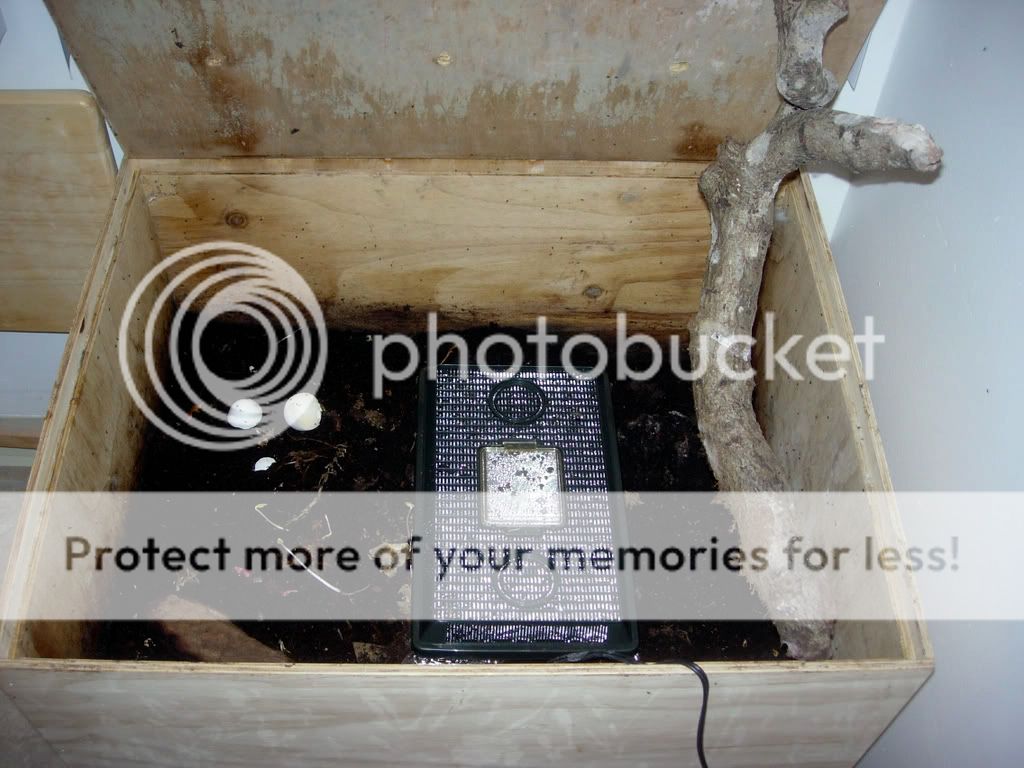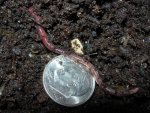It seems that not too many people on this forum have experience with African nightcrawlers, (Eudrilus eugeniae). So, I wanted to start a thread to document my experience with these worms that I can update over time. Additionally others may add information, too, if they've got experience with these worms.
There's a lot of info online, but some of it is contradictory. Basically a summary the consensus of what you'll find if you Google them is:
Since, I tend to own larger caudates, these worms sound like they could be optimal since Lumbricus terrestris is such a pain to maintain as a culture. I ordered my nightcrawlers from BWCN farms. I chose their 800 cocoons offer. Each cocoon is supposed to average 4 worms. I figured 3200 worms was way more than I needed, but I'd rather throw worms out than have too little to experiment with. When the package arrived, I looked for the cocoons/ counted some in a portion of the dirt. I'm highly skeptical that there was 800, I'd guess the figure was closer to 100 - 200, but that number would serve my purposes fine. Other than that my overall experience with the company was positive. The cocoons were well packaged and arrived timely with good handling instructions.
I put the worms in my worm bin. Unfortunately, I tend to keep my apartment several degrees cooler than 20 - 30 degrees C (68 - 86 degrees F), so I had to devise a way to warm the worms. Several Internet sites recommend using warming lights to heat the worm bed and prevent the worms from crawling at night. I figured that a light was mostly going to heat the air above the worm bed. (Perhaps a childhood of being nagged about turning the lights off when no one is in the room also made me not like this idea). Instead, I partially buried a plastic aquarium in the bed, filled it with water and added an aquarium heater to heat the bed. See the photo below for details. I'm not sure that the heat penetrates much further than a light would, but it seems to work. So I left the cocoons alone in there scattered on the surface, occasionally adding vegetable scraps.
After about a month I noticed food was being eaten and saw the appearance of little worms. It's probably now a month and a half since I got the cocoons. They seem to be about 5 - 8 cm (2 -3 inches) at this point. They do eat their food relatively quickly. I'd say it's a little slower than red worms, but nothing to complain about (although, I have to let them catch up, because I recently caught a fruit fly infestation from over feeding). I haven't noticed any of them coming up and trying to get out at night, but I'll keep checking for that. I haven't used them as food yet, because I'm waiting to get some sexually mature adults reproducing. It seems this should take about 3 months from hatching.
More to come as it develops. Below are some photos to go with the story.
The worm farm. A wooden box. Propped up on cement blocks and holes drilled in the bottom for drainage. A tablecloth hides it quite well.

The cocoons just after having arrived. Plus a semi-focused photo of one of the cocoons.


The heating system. I covered the top of the aquarium with plastic wrap to prevent evaporation and rain formation.


A recent photo of one of the worms.

There's a lot of info online, but some of it is contradictory. Basically a summary the consensus of what you'll find if you Google them is:
- They're large, similar in size to Canadian nightcrawlers, (Lumbricus terrestris), if not larger.
- They prefer warm temperatures. Optimal temperatures seem to range from 20 - 30 degrees C (68 - 86 degrees F).
- They're a good composting worm (hungry, carefree and reproductive).
- They like to crawl at night.
Since, I tend to own larger caudates, these worms sound like they could be optimal since Lumbricus terrestris is such a pain to maintain as a culture. I ordered my nightcrawlers from BWCN farms. I chose their 800 cocoons offer. Each cocoon is supposed to average 4 worms. I figured 3200 worms was way more than I needed, but I'd rather throw worms out than have too little to experiment with. When the package arrived, I looked for the cocoons/ counted some in a portion of the dirt. I'm highly skeptical that there was 800, I'd guess the figure was closer to 100 - 200, but that number would serve my purposes fine. Other than that my overall experience with the company was positive. The cocoons were well packaged and arrived timely with good handling instructions.
I put the worms in my worm bin. Unfortunately, I tend to keep my apartment several degrees cooler than 20 - 30 degrees C (68 - 86 degrees F), so I had to devise a way to warm the worms. Several Internet sites recommend using warming lights to heat the worm bed and prevent the worms from crawling at night. I figured that a light was mostly going to heat the air above the worm bed. (Perhaps a childhood of being nagged about turning the lights off when no one is in the room also made me not like this idea). Instead, I partially buried a plastic aquarium in the bed, filled it with water and added an aquarium heater to heat the bed. See the photo below for details. I'm not sure that the heat penetrates much further than a light would, but it seems to work. So I left the cocoons alone in there scattered on the surface, occasionally adding vegetable scraps.
After about a month I noticed food was being eaten and saw the appearance of little worms. It's probably now a month and a half since I got the cocoons. They seem to be about 5 - 8 cm (2 -3 inches) at this point. They do eat their food relatively quickly. I'd say it's a little slower than red worms, but nothing to complain about (although, I have to let them catch up, because I recently caught a fruit fly infestation from over feeding). I haven't noticed any of them coming up and trying to get out at night, but I'll keep checking for that. I haven't used them as food yet, because I'm waiting to get some sexually mature adults reproducing. It seems this should take about 3 months from hatching.
More to come as it develops. Below are some photos to go with the story.
The worm farm. A wooden box. Propped up on cement blocks and holes drilled in the bottom for drainage. A tablecloth hides it quite well.

The cocoons just after having arrived. Plus a semi-focused photo of one of the cocoons.


The heating system. I covered the top of the aquarium with plastic wrap to prevent evaporation and rain formation.


A recent photo of one of the worms.


